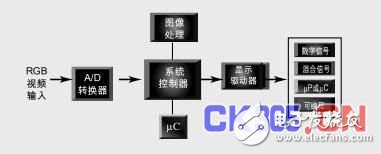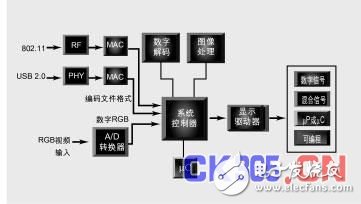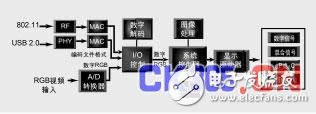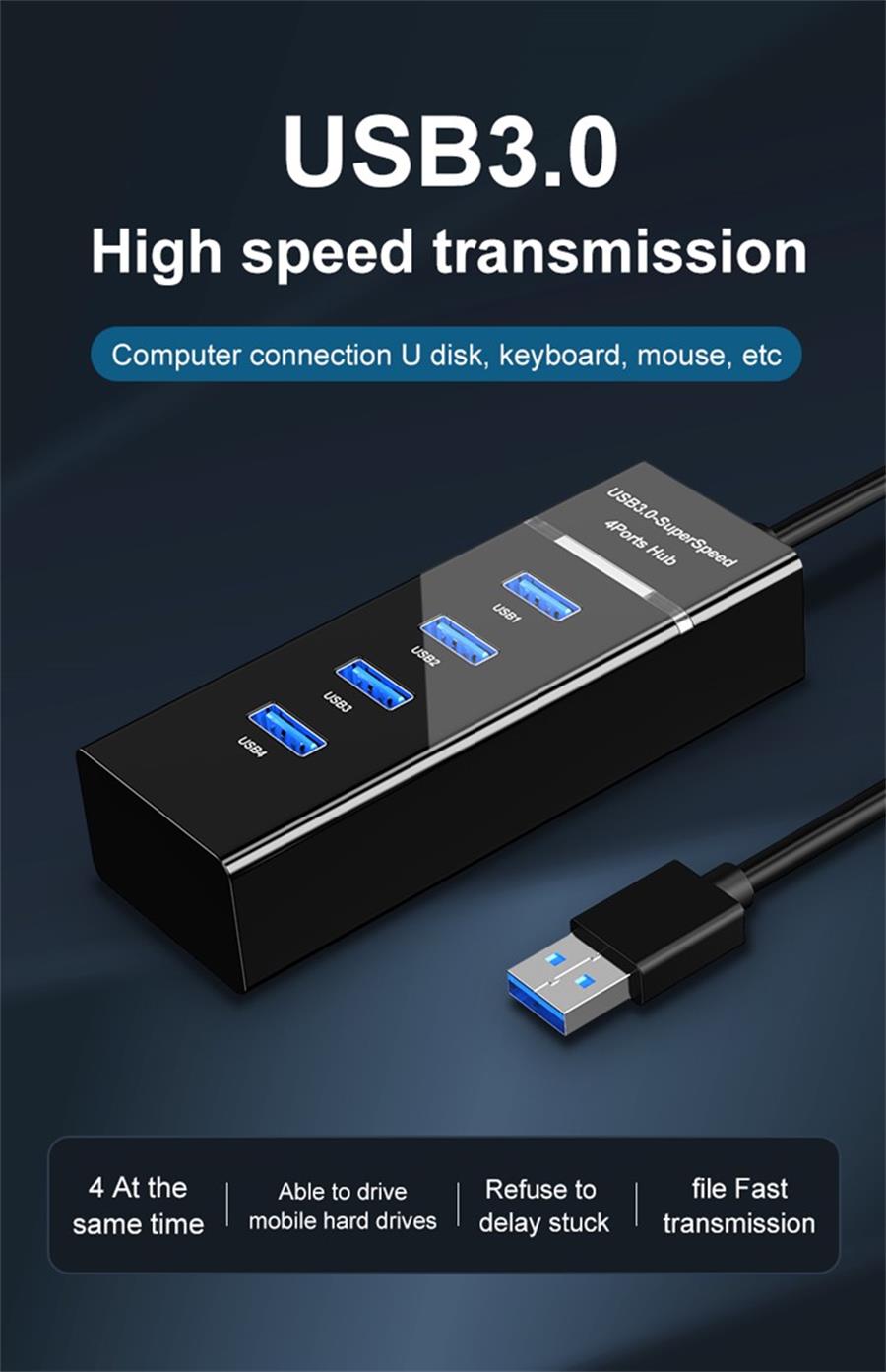Digital video technology is one of the most exciting highlights in today's consumer market, and wireless technology ensures data encryption and progressively supports higher data rates, making it an ideal medium for transmitting video information between different devices. However, there are many standards in this field, which makes it more of a major challenge for design engineers to increase product flexibility and reduce time to market. The programmable logic solution integrates various standard interfaces to ensure digital video processing and wireless connectivity while addressing the problem of interface conversion for wireless transmission of digital video information. The emergence of digital video technology has become a happy event, and the development of related technologies is as mysterious as opening the Pandora's Box. In the digital wave of scrambling, different regions, different industries and different suppliers continue to invent new technologies in the field, so there are numerous standards, formats, rules, specifications and related derivatives, which makes design engineers feel at a loss. System design engineers face more challenges. Faced with the technologies, formats, and standards introduced in digital video, the most important challenge facing digital video system designers is the risk of product design and design complexity. How do you design products based on geographic differences? How do you achieve all the performance you need quickly and efficiently? Can you effectively support a range of configurations to meet different market-level requirements? The responsibility of the system designer is to ensure that all of these design goals are achieved. Digital display technology presents system designers with unique challenges that include the performance required to achieve the target application, display feature correction for a particular technology, and generate drive signals for the target display. A large amount of computational load can cause performance to be the most important challenge in digital display applications because of the high bandwidth connection to the source. After the signal is transmitted to the display, a series of complex operations are required on the data, such as decoding from a format of an encrypted transmission into a pixel map, and optimizing the pixel mapping for display. The last data is used to generate the display drive signal. Even more difficult is that these processes must be implemented in real time, and the information data stream is transmitted at speeds from approximately 25 Mbps (streaming HDTV) to 1.5 Gbps (original uncompressed 1080i HDTV display data). Pipeline optimization is also a problem. Digital image data must be adapted to the characteristics of a particular target display technology. This is based on similar principles of chromatics, but all have their own unique, non-linear display behavior characteristics. Therefore RGB data (usually for CRT displays) must be processed to display an acceptable display on an LCD, PDP or other display. This processing may be as simple as color correction, and may include more algorithms for scaling, contrast adjustment, brightness control, gradient smoothing, edge enhancement, and image enhancement, which requires sufficient processing power. The challenge with the back end of the pipeline is that the display driver circuit processes the image data and physically drives the screen. This step will generate a series of signals and be assigned to drive each individual pixel. The format of these drive signals varies with different technologies, has strict timing requirements, and its specifications are unique to each type of display. In the case of a digital projector, a conventional product accepts analog RGB video input by appropriately processing the data and then driving the projection display. This is usually done by some analog (blue), digital (black) and control (green) components, as shown in Figure 1. As digital integration evolves, new products may support direct digital input in certain formats and may support receiving and displaying encoded file formats. In this case, the designer's difficult choice is which input and format to support? Then the appropriate components must be selected and integrated to achieve such choices in the design and meet the performance requirements. Figure 2 shows a design example that supports a fast 802.11 WLAN connection. Engineers may ask: How do you implement new logic in a system controller to handle new data? What interfaces and signal standards are needed to integrate new components? What user interfaces and control software do you need to develop? Because the 802.11b, 802.11a, and HiperLAN2 specifications define non-standard interfaces and require interfaces to digital displays and other video products, programmable logic is the ideal solution for addressing interface problems. In general, programmable logic devices are flexible and the development platform is efficient, thus speeding up development. In addition, FPGAs are extremely cost-effective and are therefore viable product solutions. Figure 3 shows an FPGA-based digital all-in-one projector solution. It can be seen that an FPGA (shown in maroon) and associated logic are added between the A/D converter and the existing system controller. In this design, the FPGA acts as an I/O arbitration that accepts inputs from all three sources. When such a connection is active, the digital RGB simply flows through. However, in the case of USB 2.0 and 802.11b, the FPGA fully manages these new interfaces and decodes the input data stream into a digital RGB format. Since the FPGA supports some high-speed interfaces, each of the other components (memory, ASSP, etc.) can be flexibly selected. FPGAs also enable interfaces to future wireless standards such as 802.11a and HiperLAN2, as well as existing wired interfaces such as Ethernet and IEEE1394. The FPGA can perform functions such as encoding/decoding and image processing (represented by black/maroon modules) independently or appropriately using an ASIC or ASSP. FPAG also supports a wide range of encryption/decryption standards such as AES, DES, Triple DES and some special types. At present, there is no firm standard for the decryption of streaming media files. The existing standards are also very different due to geographical differences and differences in content providers. Using a programmable device as a decryption engine can support the user's current and future needs. As the core of the display driver circuit, the programmable logic design can support two or more display options. Significant in controlling the cost of expensive components; supporting a range of products based on a common core design to expand the market; LVDS can be used to route signals on a board (which can often lead to a large number of board areas). It also minimizes system-level EMI and the effects of noise on critical signals. FPGAs are also particularly well-suited for designing unique and attractive user interfaces. They are truly GPIOs. In today's fierce market competition, user interfaces are one of the most effective ways to differentiate them from competitors' products. FPGAs offer the greatest freedom for innovation in this area. In addition, programmable logic does not delay design progress for countless design iterations. This may be a unique advantage when integrating new and unfamiliar technologies. Once the design is complete, the product can be quickly released and put into production quickly. When inevitable design and incompatibilities arise, you can quickly resolve and quickly upgrade your field-equipped systems, dramatically reducing support and service costs. If the user needs a new feature, a different performance, or a new configuration, it can be implemented quickly and efficiently with the help of an FPGA. If you are faced with a supply of system components during the production process, the FPGA can also be used as an alternative solution to ensure timely delivery of the product. In short, the portability, mobility and ease of use of the device have become the driving force for the development of digital video information wireless transmission technology. As wireless technology data rates and QoS continue to increase, the dream of wireless video will eventually become a reality. However, there are still some design challenges when integrating various wireless interface technologies in digital systems. Programmable logic devices provide fast interface time and design flexibility by providing interfaces to other components, decoding/encoding, image processing and encryption/decryption functions. Sex, etc. can sometimes help design engineers solve problems they face. USB3.0 provides a standard interface for all kinds of devices that are connected to PCS or audio/high-frequency devices.The theoretical transmission speed is up to 5Gbps. HUB is commonly known as a hub, which is used to connect multiple computers or network devices in a network using a star topology. The USB 3.0 Hubs is an upgrade of the USB 2.0 Hubs. The transmission rate of the USB2.0 is 480Mbps, and the transmission rate of the USB3.0 is 5Gbps. The maximum transmission speed is 10 times that of the USB2.0, and the transmission speed is faster.
The USB 3.0 hub provides a quick and easy way to connect all the peripherals you use on your desktop. You can connect 2 external monitors, gigabit Ethernet ports, headphones/speakers, USB printers and scanners, keyboards, mice and other peripherals with a single USB 3.0 cable to your computer for up to 5Gbit/s external storage access (10 times faster than USB 2.0). USB HUBS can do split, but not evenly. If, as the subject says, you only have two devices, and the two devices are transmitting at the same time and taking up as much bandwidth as possible, then you end up with two devices each taking up 50% of the bandwidth. Due to the fast theoretical speed of USB3.0, even if divided into four parts, the theoretical bandwidth of each port is still as high as 1Gbps, and the number of converted bytes is close to 100MB/s, which is still a very high bandwidth.
Usb 3.0 Hubs,Wireless Usb Hub,Usb C Hub For Desktop,All In One Usb C Hub Henan Yijiao Trading Co., Ltd , https://www.yjusbhubs.com


